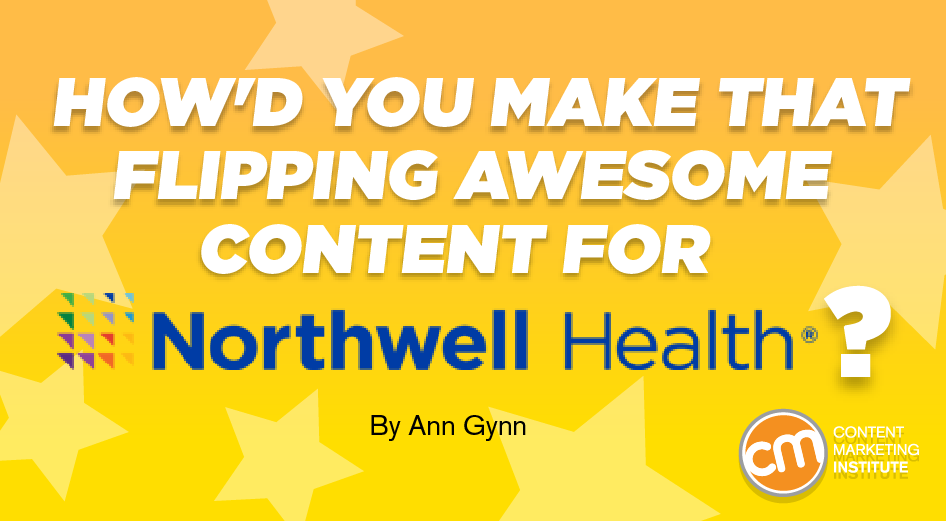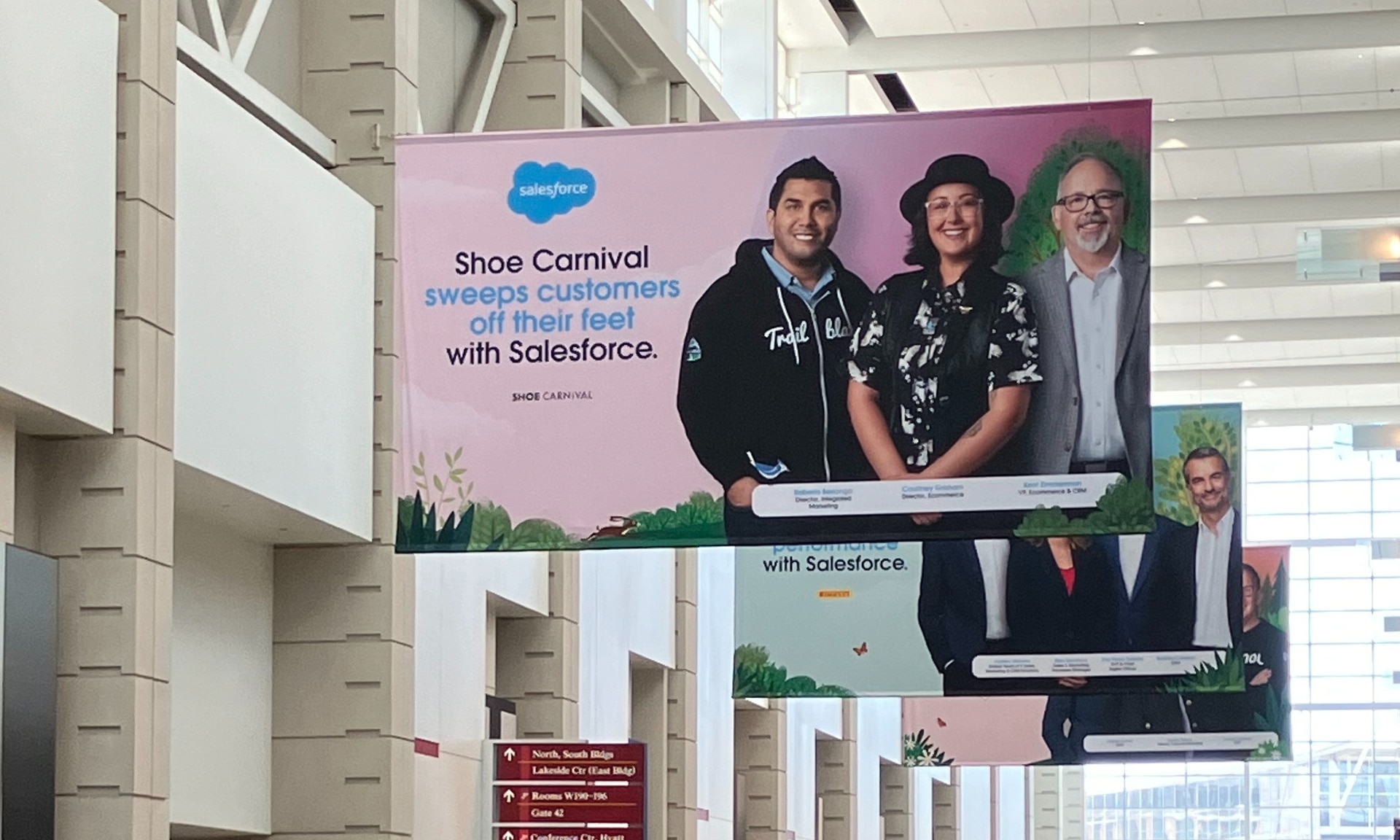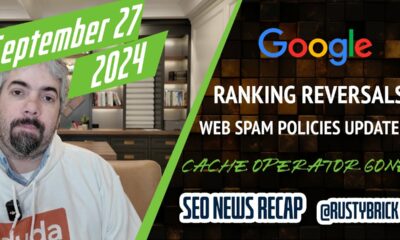MARKETING
How’d You Make That Flipping Awesome Content for Northwell Health

Northwell Health diagnosed a multi-symptom problem in 2017.
“We were undergoing a crisis of trust. Amid misinformation and manipulative messages, expertise had never been needed more, especially in the world of health and wellness,” says Julie Shapiro of Northwell Health, New York’s largest health care provider.
Sound familiar? As it turned out, Northwell’s prescription for the trust crisis positioned it well to address the global health crisis that struck a few years later.
The Well by Northwell Health launched in 2017 as a digital publication on a mission to deliver expert guidance and empathy at moments of truth in people’s lives through documentary video series, advice columns, first-person essays, and magazine-style reported features.
“Our audience was frustrated with the health information they were finding. Publishers were monetizing anxiety, and other health systems were trying to sanitize it through cold, clinical information, delivered dispassionately,” as The Well and its agency partner Revmade explained in their Content Marketing Award (CMA) submission.
From the start, the publication’s content performed well and earned awards (including a 2019 Content Marketing Award for Best Content Strategy).
Then came the pandemic. Traffic exploded while quality remained high.
The site won 2021 CMAs for Best Content Strategy and Best Overall Editorial – Digital and earned finalist nods for Best Content Marketing Program and Best Content Marketing Program in Health Care. For her work as editor-in-chief, Julie earned a spot as a finalist for 2021 B2C Content Marketer of The Year.
Trusted content helps readers and brand
In January 2020, The Well team developed its first content on the novel coronavirus (they didn’t yet call it COVID-19) and published it in February. In March, the impact reached the United States.
“Our page views exploded because people were just starting to hear about this novel virus and were desperate for information,” Julie says.
Engagements on The Well soared to 3.6 million for the year, about triple the previous year. As Julie explains (and most of us remember), people felt terrified and struggled to find information they could trust. Many found it hard to believe or understand the evolving advice.
“We took the opportunity to figure out specifically what do people need to know and what are they searching for? And then we provided them with it,” Julie says.
Focusing on reader concerns helped the publication get more results from a smaller investment. “We’ve decreased budget every year,” Julie says, “but we were increasing our engagements because we had figured out what people wanted.”
You read that right – as The Well did better than well, its budget got smaller. “There’s a reason for that (budget reduction). We are really data driven in everything we create now,” Julie says.
This year, The Well expects to earn more organic traffic than paid. “We’ve refined this process so much that we can count on it, and we don’t need as much money,” she explains.
As data-driven #content performed better, @NorthwellHealth could spend less on paid promotion and still see soaring engagement, says #JulieShapiro via @AnnGynn @CMIContent. #CMWorld Click To Tweet
A data-driven content development process
Julia shares the process The Well developed for its data-driven approach. It starts with an idea form that anyone at Northwell can submit. The form asks:
- What’s the idea? What are you looking to do?
- Who’s the audience?
- How will people find the content?
The Well team reviews the submitted ideas in a monthly editorial planning meeting with its Revmade consultants. The Revmade team gathers the submitted ideas, adds their own, and does the related search research. They present their findings in a pitch memo.
Each idea gets a single slide that includes the following information:
- Detailed idea and concept
- Search volume for targeted keywords
- Search engine ranking prediction
- Recommended writers
- Suggested subject matter experts
- Proposal to “FLOOD the MARKET” – doing multiple pieces or series – or treat as a one-and-done piece
Julie and managing editor Meghan Holmgren then go through the pitch memos, refine them, and assign the content.
From there, the process goes like this:
- Meghan works with the writers and interviewees and gets everything approved by the subject matter experts.
- Julie reviews the final product.
- The creative team handles the imagery.
- The development team builds the pages.
- The quality assurance team makes sure everything works properly.
- After a final review by a proofreader, the content goes live.
“We used to have a very large dedicated team, and it got whittled away. Now those people are dedicated to other things,” Julie explains. Now she and Megan are the only full-time employees dedicated to The Well, and they tap into other internal teams for assistance. If they don’t have the capacity to write a piece, they contract with freelance writers.
“It’s always an ongoing discussion about how much content we can create. It depends not just on how much money, but how many people we can have to make it happen. It truly takes a village,” Julie says.
How much #content The Well can create depends on how much money and how many people are available to make it happen, says #JulieShapiro via @AnnGynn @CMIContent. #CMWorld Click To Tweet
HANDPICKED RELATED CONTENT:
Handling exceptions and breaking news
That all sounds well organized and strategic. But health content can’t always be planned months ahead. Sometimes, the process goes out the window because certain stories can’t wait for monthly editorial meetings or in-depth research.
When “breaking news” interrupts the standard process, Julie says, the managing editor takes the lead on content development.
For example, when the FDA approved COVID-19 vaccination boosters and vaccinations for children ages five to 11, the managing editor reached out immediately to internal writers. If internal writers aren’t available to handle breaking news, she relies on a core group of freelancers who can do quick turnarounds.
“All the other teams that this project touches know that this is a priority, and everybody does it quickly,” Julia says. “We’re not built to [be a news organization], but we do the best we can.”
Delivering big results
As detailed in their CMA nomination, The Well’s mission is clear: “Become a trusted partner; be there for them during life-altering diagnoses, to correct misinformation, and most recently, to guide them through a pandemic that changed everything overnight.
“We answer questions and address anxieties with expert opinion and advice, through empathetic stories and by delivering ‘I-feel-seen’ editorial. In simpler terms: We tell the truth about health and tell it well.”
How well does The Well do in accomplishing that mission? The team details three measurement areas that evaluated both audience and business impact:
- Brand trust: Through before-after benchmarking studies, they sought to improve trust in Northwell’s brand and experts.
- Audience engagement: Relationships with their target community are evaluated based on how their audiences spent time online (e.g., search, social, publications).
- Business referrals: Clicks to the main site, Northwell.edu, serve as the metric for moving from awareness to activation.
The outcomes indicate The Well works as an effective treatment for building trust in Northwell’s health care system:
- New York residents’ likelihood to seek care at Northwell increased by a 44-point margin after engaging with The Well’s content. The same study found a significant increase in Northwell’s trustworthiness among the community.
- Coverage of The Well’s content skyrocketed brand awareness, reaching audiences on Today.com, ABC 7, Apple News, and even top positions on Reddit’s coronavirus subreddit several times.
- The Well surpassed 2 million sessions in a year for the first time and nearly doubled its rate of new subscribers.
- The Well content generated 20% more direct referrals over the previous year.
- Referrals from The Well to Northwell.edu were more cost-efficient than other marketing activities as measured by site engagement and appointments generated.
- Media-spend efficiency set records, achieving a cost-per-landing-page visit of 21 cents, five times better than published benchmarks.
@NorthwellHealth’s #ContentMarketing site, The Well, works as an effective treatment for building trust in its health care, says Ann Gynn via @CMIContent. #CMWorld Click To Tweet
HANDPICKED RELATED CONTENT:
Go for data- and fact-based content
No universal cure exists for health-related misinformation and distrust of health care experts. Yet The Well has gone a long way toward rectifying the symptoms for their New York communities with a blend of fact-based and empathetic content.
Data allow the team behind The Well to understand and deliver the content their audience wants and needs. That content inspires trust in Northwell Health’s expertise. And its success means the organization can spend less while getting more.
That sounds like an ideal prescription for all content marketers.
HANDPICKED RELATED CONTENT:
Cover image by Joseph Kalinowski/Content Marketing Institute
MARKETING
YouTube Ad Specs, Sizes, and Examples [2024 Update]
![YouTube Ad Specs, Sizes, and Examples [2024 Update] YouTube Ad Specs, Sizes, and Examples](https://articles.entireweb.com/wp-content/uploads/2024/06/YouTube-Ad-Specs-Sizes-and-Examples.jpg)
Introduction
With billions of users each month, YouTube is the world’s second largest search engine and top website for video content. This makes it a great place for advertising. To succeed, advertisers need to follow the correct YouTube ad specifications. These rules help your ad reach more viewers, increasing the chance of gaining new customers and boosting brand awareness.
Types of YouTube Ads
Video Ads
- Description: These play before, during, or after a YouTube video on computers or mobile devices.
- Types:
- In-stream ads: Can be skippable or non-skippable.
- Bumper ads: Non-skippable, short ads that play before, during, or after a video.
Display Ads
- Description: These appear in different spots on YouTube and usually use text or static images.
- Note: YouTube does not support display image ads directly on its app, but these can be targeted to YouTube.com through Google Display Network (GDN).
Companion Banners
- Description: Appears to the right of the YouTube player on desktop.
- Requirement: Must be purchased alongside In-stream ads, Bumper ads, or In-feed ads.
In-feed Ads
- Description: Resemble videos with images, headlines, and text. They link to a public or unlisted YouTube video.
Outstream Ads
- Description: Mobile-only video ads that play outside of YouTube, on websites and apps within the Google video partner network.
Masthead Ads
- Description: Premium, high-visibility banner ads displayed at the top of the YouTube homepage for both desktop and mobile users.
YouTube Ad Specs by Type
Skippable In-stream Video Ads
- Placement: Before, during, or after a YouTube video.
- Resolution:
- Horizontal: 1920 x 1080px
- Vertical: 1080 x 1920px
- Square: 1080 x 1080px
- Aspect Ratio:
- Horizontal: 16:9
- Vertical: 9:16
- Square: 1:1
- Length:
- Awareness: 15-20 seconds
- Consideration: 2-3 minutes
- Action: 15-20 seconds
Non-skippable In-stream Video Ads
- Description: Must be watched completely before the main video.
- Length: 15 seconds (or 20 seconds in certain markets).
- Resolution:
- Horizontal: 1920 x 1080px
- Vertical: 1080 x 1920px
- Square: 1080 x 1080px
- Aspect Ratio:
- Horizontal: 16:9
- Vertical: 9:16
- Square: 1:1
Bumper Ads
- Length: Maximum 6 seconds.
- File Format: MP4, Quicktime, AVI, ASF, Windows Media, or MPEG.
- Resolution:
- Horizontal: 640 x 360px
- Vertical: 480 x 360px
In-feed Ads
- Description: Show alongside YouTube content, like search results or the Home feed.
- Resolution:
- Horizontal: 1920 x 1080px
- Vertical: 1080 x 1920px
- Square: 1080 x 1080px
- Aspect Ratio:
- Horizontal: 16:9
- Square: 1:1
- Length:
- Awareness: 15-20 seconds
- Consideration: 2-3 minutes
- Headline/Description:
- Headline: Up to 2 lines, 40 characters per line
- Description: Up to 2 lines, 35 characters per line
Display Ads
- Description: Static images or animated media that appear on YouTube next to video suggestions, in search results, or on the homepage.
- Image Size: 300×60 pixels.
- File Type: GIF, JPG, PNG.
- File Size: Max 150KB.
- Max Animation Length: 30 seconds.
Outstream Ads
- Description: Mobile-only video ads that appear on websites and apps within the Google video partner network, not on YouTube itself.
- Logo Specs:
- Square: 1:1 (200 x 200px).
- File Type: JPG, GIF, PNG.
- Max Size: 200KB.
Masthead Ads
- Description: High-visibility ads at the top of the YouTube homepage.
- Resolution: 1920 x 1080 or higher.
- File Type: JPG or PNG (without transparency).
Conclusion
YouTube offers a variety of ad formats to reach audiences effectively in 2024. Whether you want to build brand awareness, drive conversions, or target specific demographics, YouTube provides a dynamic platform for your advertising needs. Always follow Google’s advertising policies and the technical ad specs to ensure your ads perform their best. Ready to start using YouTube ads? Contact us today to get started!
MARKETING
Why We Are Always ‘Clicking to Buy’, According to Psychologists

Amazon pillows.
MARKETING
A deeper dive into data, personalization and Copilots

Salesforce launched a collection of new, generative AI-related products at Connections in Chicago this week. They included new Einstein Copilots for marketers and merchants and Einstein Personalization.
To better understand, not only the potential impact of the new products, but the evolving Salesforce architecture, we sat down with Bobby Jania, CMO, Marketing Cloud.
Dig deeper: Salesforce piles on the Einstein Copilots
Salesforce’s evolving architecture
It’s hard to deny that Salesforce likes coming up with new names for platforms and products (what happened to Customer 360?) and this can sometimes make the observer wonder if something is brand new, or old but with a brand new name. In particular, what exactly is Einstein 1 and how is it related to Salesforce Data Cloud?
“Data Cloud is built on the Einstein 1 platform,” Jania explained. “The Einstein 1 platform is our entire Salesforce platform and that includes products like Sales Cloud, Service Cloud — that it includes the original idea of Salesforce not just being in the cloud, but being multi-tenancy.”
Data Cloud — not an acquisition, of course — was built natively on that platform. It was the first product built on Hyperforce, Salesforce’s new cloud infrastructure architecture. “Since Data Cloud was on what we now call the Einstein 1 platform from Day One, it has always natively connected to, and been able to read anything in Sales Cloud, Service Cloud [and so on]. On top of that, we can now bring in, not only structured but unstructured data.”
That’s a significant progression from the position, several years ago, when Salesforce had stitched together a platform around various acquisitions (ExactTarget, for example) that didn’t necessarily talk to each other.
“At times, what we would do is have a kind of behind-the-scenes flow where data from one product could be moved into another product,” said Jania, “but in many of those cases the data would then be in both, whereas now the data is in Data Cloud. Tableau will run natively off Data Cloud; Commerce Cloud, Service Cloud, Marketing Cloud — they’re all going to the same operational customer profile.” They’re not copying the data from Data Cloud, Jania confirmed.
Another thing to know is tit’s possible for Salesforce customers to import their own datasets into Data Cloud. “We wanted to create a federated data model,” said Jania. “If you’re using Snowflake, for example, we more or less virtually sit on your data lake. The value we add is that we will look at all your data and help you form these operational customer profiles.”
Let’s learn more about Einstein Copilot
“Copilot means that I have an assistant with me in the tool where I need to be working that contextually knows what I am trying to do and helps me at every step of the process,” Jania said.
For marketers, this might begin with a campaign brief developed with Copilot’s assistance, the identification of an audience based on the brief, and then the development of email or other content. “What’s really cool is the idea of Einstein Studio where our customers will create actions [for Copilot] that we hadn’t even thought about.”
Here’s a key insight (back to nomenclature). We reported on Copilot for markets, Copilot for merchants, Copilot for shoppers. It turns out, however, that there is just one Copilot, Einstein Copilot, and these are use cases. “There’s just one Copilot, we just add these for a little clarity; we’re going to talk about marketing use cases, about shoppers’ use cases. These are actions for the marketing use cases we built out of the box; you can build your own.”
It’s surely going to take a little time for marketers to learn to work easily with Copilot. “There’s always time for adoption,” Jania agreed. “What is directly connected with this is, this is my ninth Connections and this one has the most hands-on training that I’ve seen since 2014 — and a lot of that is getting people using Data Cloud, using these tools rather than just being given a demo.”
What’s new about Einstein Personalization
Salesforce Einstein has been around since 2016 and many of the use cases seem to have involved personalization in various forms. What’s new?
“Einstein Personalization is a real-time decision engine and it’s going to choose next-best-action, next-best-offer. What is new is that it’s a service now that runs natively on top of Data Cloud.” A lot of real-time decision engines need their own set of data that might actually be a subset of data. “Einstein Personalization is going to look holistically at a customer and recommend a next-best-action that could be natively surfaced in Service Cloud, Sales Cloud or Marketing Cloud.”
Finally, trust
One feature of the presentations at Connections was the reassurance that, although public LLMs like ChatGPT could be selected for application to customer data, none of that data would be retained by the LLMs. Is this just a matter of written agreements? No, not just that, said Jania.
“In the Einstein Trust Layer, all of the data, when it connects to an LLM, runs through our gateway. If there was a prompt that had personally identifiable information — a credit card number, an email address — at a mimum, all that is stripped out. The LLMs do not store the output; we store the output for auditing back in Salesforce. Any output that comes back through our gateway is logged in our system; it runs through a toxicity model; and only at the end do we put PII data back into the answer. There are real pieces beyond a handshake that this data is safe.”
-

 WORDPRESS3 days ago
WORDPRESS3 days agoWordPress biz Automattic details WP Engine deal demands • The Register
-
SEARCHENGINES5 days ago
Daily Search Forum Recap: September 30, 2024
-

 SEARCHENGINES6 days ago
SEARCHENGINES6 days agoGoogle Volatility With Gains & Losses, Updated Web Spam Policies, Cache Gone & More Search News
-

 SEO7 days ago
SEO7 days ago6 Things You Can Do to Compete With Big Sites
-
SEARCHENGINES4 days ago
Daily Search Forum Recap: October 1, 2024
-

 SEO6 days ago
SEO6 days agoAn In-Depth Guide For Businesses
-

 AFFILIATE MARKETING6 days ago
AFFILIATE MARKETING6 days agoNvidia CEO Jensen Huang Praises Nuclear Energy to Power AI
-

 AFFILIATE MARKETING6 days ago
AFFILIATE MARKETING6 days agoThis Minimalist Lamp Lets You Pick From 16 Million+ Lighting Colors for Maximum Productivity















You must be logged in to post a comment Login